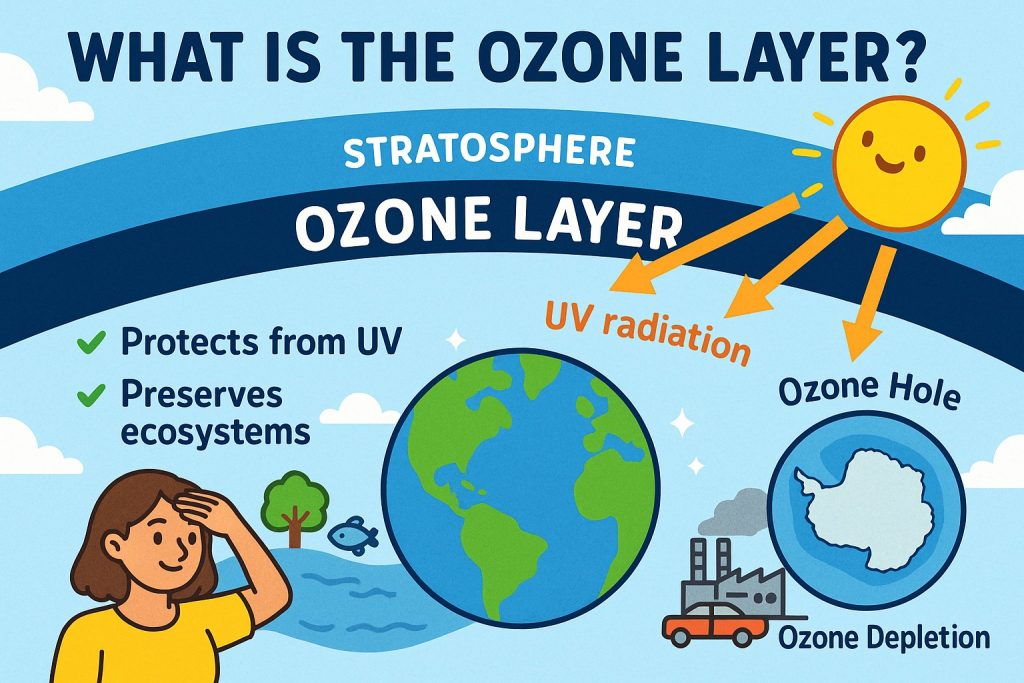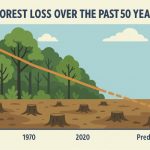The ozone layer is a vital shield in Earth’s upper atmosphere that protects life by absorbing most of the Sun’s harmful ultraviolet (UV) radiation. Though invisible to the eye, this thin layer of gas plays a critical role in preserving ecosystems, human health, and climate balance.
Where Is the Ozone Layer Located?
- The ozone layer is found in the stratosphere, roughly 15 to 35 kilometers (9 to 22 miles) above Earth’s surface.
- It is densest over the mid-latitudes and thinnest near the poles, especially the Antarctic region.
Ozone (O₃) is a molecule made of three oxygen atoms. Most of Earth’s ozone exists in this atmospheric layer.
What Does the Ozone Layer Do?
The ozone layer acts as Earth’s natural sunscreen by absorbing 95–99% of UV-B and UV-C radiation from the Sun. These rays can be extremely dangerous if they reach the surface:
- Protects human health by reducing the risk of skin cancer, eye cataracts, and immune suppression.
- Preserves ecosystems, especially in oceans where UV can harm phytoplankton, the base of the marine food web.
- Protects crops and animals from DNA damage caused by excess UV.
Without this protective layer, life on Earth as we know it would be at serious risk.
Ozone Depletion and the Ozone Hole
In the late 20th century, scientists discovered that human-made chemicals called chlorofluorocarbons (CFCs) were destroying ozone in the stratosphere.
- In 1985, a large ozone hole was detected over Antarctica.
- CFCs, once used in refrigerators, aerosols, and air conditioners, release chlorine atoms that break down ozone molecules.
- Each chlorine atom can destroy over 100,000 ozone molecules before breaking down.
Global Response: The Montreal Protocol
The international community acted quickly:
- In 1987, the Montreal Protocol was signed to phase out ozone-depleting substances.
- It is considered one of the most successful environmental agreements in history.
- As a result, the ozone layer is now slowly recovering, and scientists estimate it will return to 1980 levels by 2040–2060, depending on the region.
Ozone Layer vs. Ground-Level Ozone
It’s important to distinguish:
- Stratospheric ozone (good) protects life.
- Tropospheric ozone (bad) is a pollutant formed near the ground by vehicle emissions and sunlight, contributing to smog and respiratory problems.
Glossary
- Ozone (O₃) — A molecule made of three oxygen atoms that absorbs UV radiation.
- Stratosphere — The second layer of Earth’s atmosphere, above the troposphere.
- Ultraviolet (UV) radiation — Invisible solar rays that can damage living tissue.
- CFCs (chlorofluorocarbons) — Synthetic chemicals once used in industry that harm the ozone layer.
- Montreal Protocol — A global treaty aimed at phasing out substances that deplete the ozone layer.


